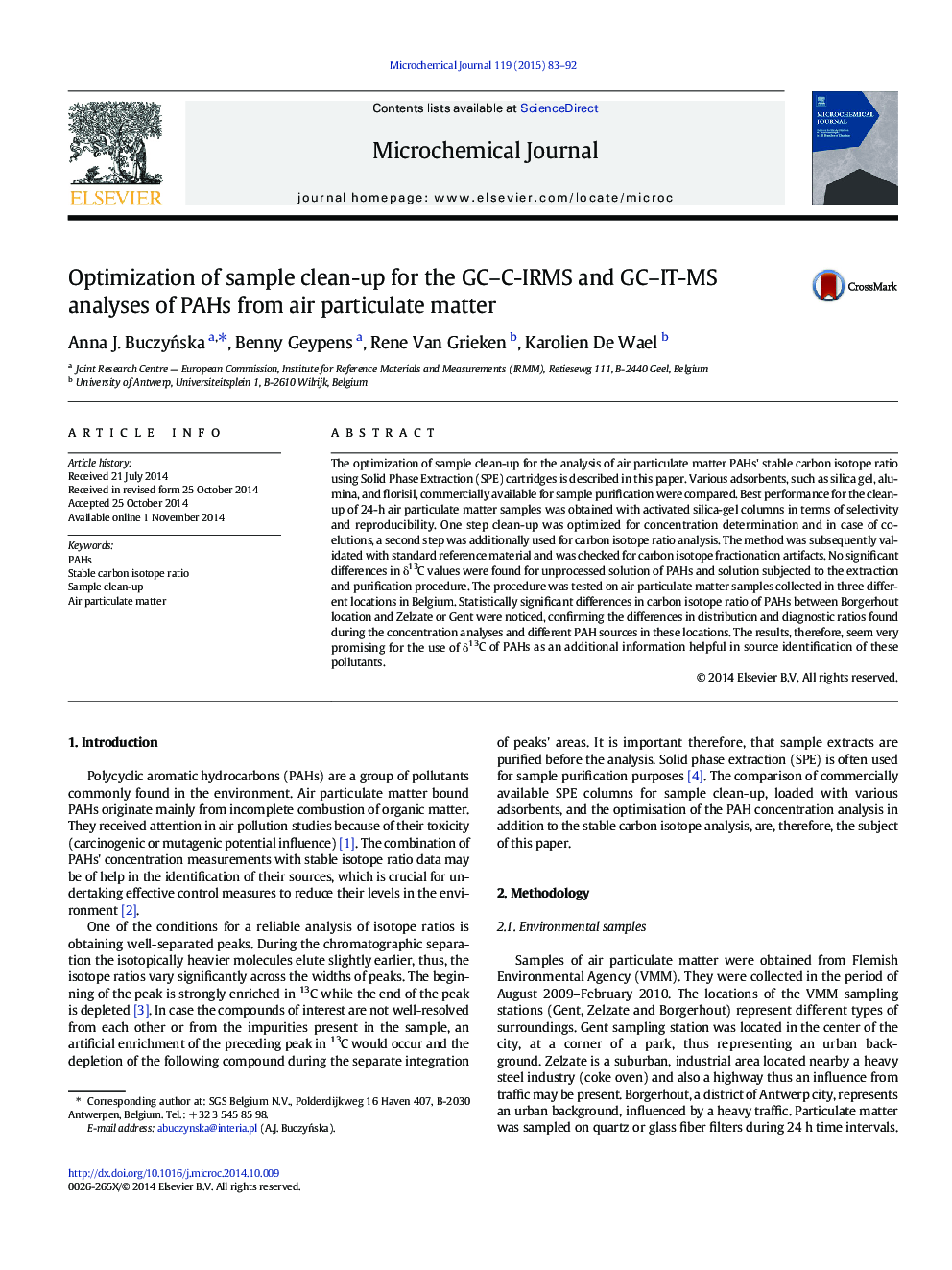| Article ID | Journal | Published Year | Pages | File Type |
|---|---|---|---|---|
| 1227734 | Microchemical Journal | 2015 | 10 Pages |
•Sample clean-up for the analysis of stable carbon isotope ratio of PAHs is optimized.•Best performance was obtained with activated silica-gel cartridges.•The method was tested on air particulate matter from different locations in Belgium.•Statistically significant differences between some of the locations were seen.
The optimization of sample clean-up for the analysis of air particulate matter PAHs' stable carbon isotope ratio using Solid Phase Extraction (SPE) cartridges is described in this paper. Various adsorbents, such as silica gel, alumina, and florisil, commercially available for sample purification were compared. Best performance for the clean-up of 24-h air particulate matter samples was obtained with activated silica-gel columns in terms of selectivity and reproducibility. One step clean-up was optimized for concentration determination and in case of co-elutions, a second step was additionally used for carbon isotope ratio analysis. The method was subsequently validated with standard reference material and was checked for carbon isotope fractionation artifacts. No significant differences in δ13C values were found for unprocessed solution of PAHs and solution subjected to the extraction and purification procedure. The procedure was tested on air particulate matter samples collected in three different locations in Belgium. Statistically significant differences in carbon isotope ratio of PAHs between Borgerhout location and Zelzate or Gent were noticed, confirming the differences in distribution and diagnostic ratios found during the concentration analyses and different PAH sources in these locations. The results, therefore, seem very promising for the use of δ13C of PAHs as an additional information helpful in source identification of these pollutants.
